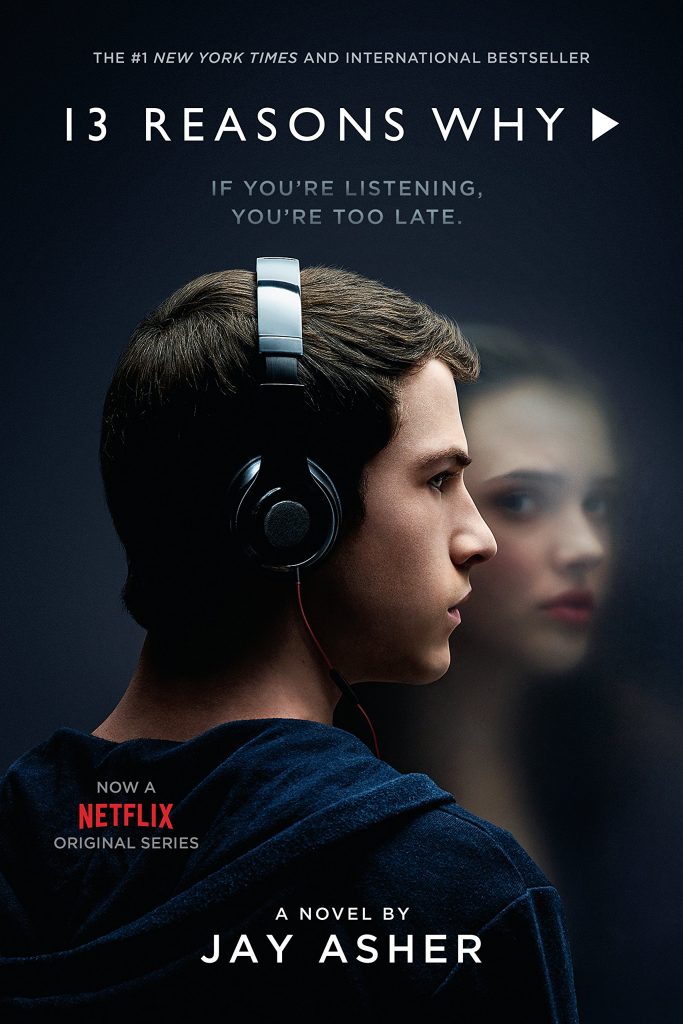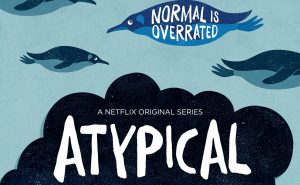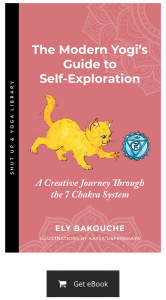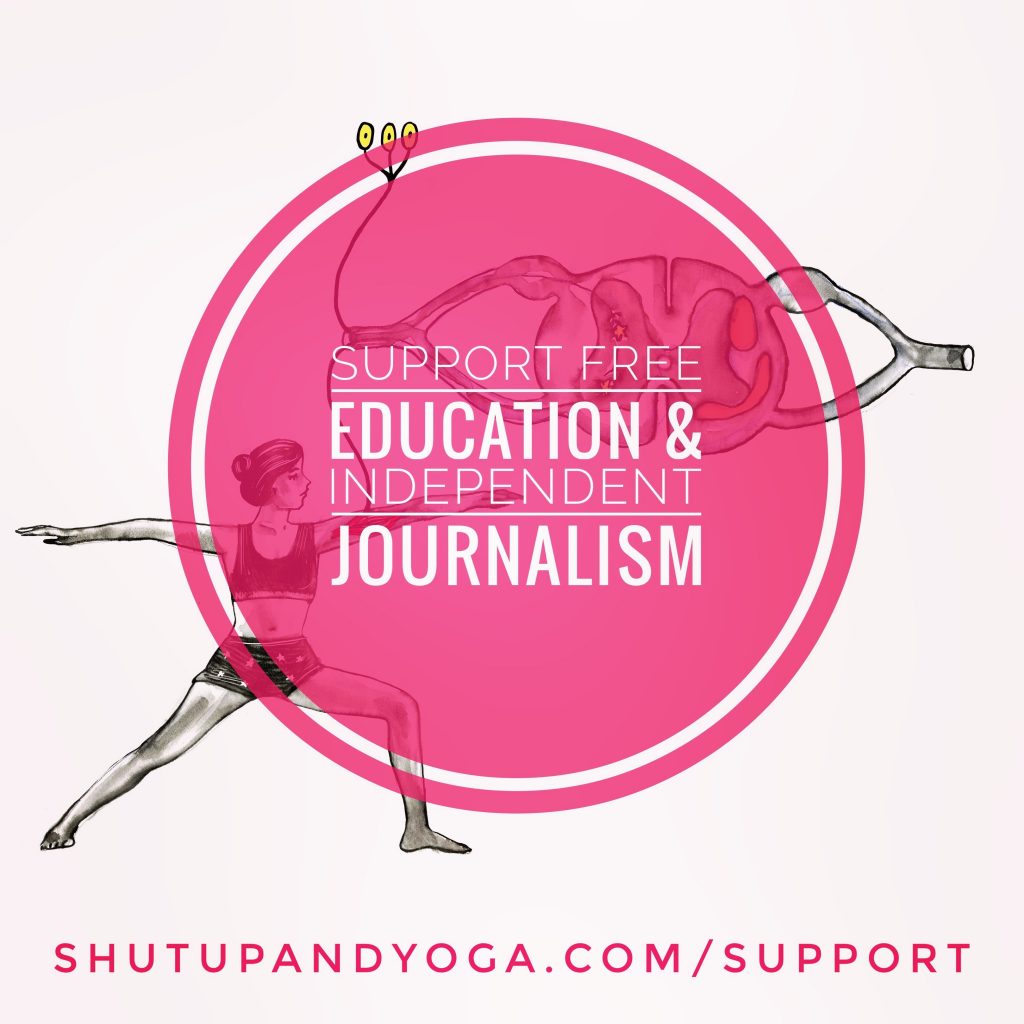Mental health is a tricky topic in that it is much less visible than physical health. When something goes wrong inside of our minds, the signs are more subtle than, say, when we injure a limb. Over the last few years, there has been a collective effort at putting the topic to the forefront of public attention. While mental health advocacy isn’t yet mainstream and still requires a special month of awareness, it is gaining a much-needed momentum in the health and wellness spheres. More and more people are seeing therapists and counselors. Panic attacks are taken seriously, and we are increasingly treating anxiety as a health condition.
This movement has sparked conversations on the topic and has made it easier for us all to express our feelings.
I am sensitive to my surroundings which often results in sensory and stimulation overload. In other words, I feel overwhelmed on a regular basis. My social media and email inbox are filled with mental health advocates who make it normal for me to share this reality. It’s easier for me now to look for fellow sensitives who struggle with living in a fast and loud world, too. With a few clicks, I can also find tools, resources, and ideas to help me navigate that overwhelm and take the right course of action—the path that can help me feel more at ease.
Lately, I’ve been thinking about that word, overwhelm, and its accompanying feeling, and how, when it shows up, I always want to make it leave as soon as possible. Not because I consciously want to, but because I was made to believe that I am broken when I feel this kind of strong emotion. I have somehow gotten to the understanding that it doesn’t belong in my body or mind. I’m supposed to just deal with it; I should learn to control it.
Where does this idea come from?
I have recently joined Leesa Renee Hall’s community where she provides thought-provoking questions to explore our biases. She organizes what she named Inner Field Trips, which are 10-day journeys where every day, you journal for 20 minutes with a few questions around a specific topic. Like many right now, I want to be a better human being and take part in the social rebellion through anti-racism work. Her guidance allows me to work on my own ingrained behaviors without the aforementioned overwhelm I experience in social justice spaces and conversations.

In preparation for the experience, Leesa explained that intentional journaling would help us to dismantle our inner white supremacist biases. She said something that has stayed with me: traits of white supremacy include perfectionism and the idea that everyone needs fixing.
Mental health is, unsurprisingly, a domain infused with white supremacist ideas. Don’t get me wrong; I don’t think people with depression should be left with their depression untreated nor do I believe I should stay stuck in my overwhelm or any emotion that puts my body under stress. My question is, how much fixing is too much fixing? Can attempting to “fix” a mental illness be doing more harm than good? What boxes, labels, ideals are we hoping to tick and reach when we get on top of the proverbial mountain of recovery?
Once we scrape the surface of these ideals, we uncover a whole world of expectations. We imagine that the process is linear, and that recovery is the end of a path rather than the path itself.
The reality is much more complex than that. Recovery indicates that something is not working properly when actually, overwhelm is a completely natural response to sensory overload. So is depression when there’s a chemical imbalance in your brain or a traumatic event in your life. Our mental health conditions are natural responses to what is going on within and around us, and recovery doesn’t take that into account.
“When he saw Gillian last week she told him he was “making progress.” Mental healthcare professionals are always using this hygienic vocabulary, words wiped clean as whiteboards, free of connotation, sexless.” — Normal People by Sally Rooney
I wonder if there was ever a time and place during the short history of humanity when mental health didn’t have the expectations of recovery attached to it. I wonder what words people used to describe mental health before the system of white supremacy was built, when the expectations of perfection weren’t in everything we do. When and where in the world could we experience the emotional ups and downs of life in peace, without the pressure to rush up the process, without the urge to discard the importance of the journey for the sake of a supposed almighty goal?
I am yet to discover answers to these questions, but recently I’ve found solace and inspiration in the ways the media portrays mental health and healing. I keep seeing TV shows and listening to songs that act as little containers of our experiences as humans with minds that fluctuate. With minds that simply live.
The following don’t just mention mental health, and they don’t talk about “keeping a positive mindset” either. Thanks but no thanks. These songs and TV shows illustrate how messy, difficult, heart-breaking tending to our minds is.
Trigger warning: These pieces don’t shy away from sharing difficult experiences, they are filled with despair, sadness, and pain. They show mental struggles within the framework of life; not as something detached from our day-to-day. Although I’ve done my best to limit spoilers, they do contain some!
1. Book/TV series: Normal People (written by Sally Rooney/directed Lenny Abrahamson and Hettie Macdonald)

The story follows two lovers, Connell and Marianne, from high school and through university. As one does at that stage in life, they both go through experiences that shape them together as well as individually. Connell’s friend and flatmate Niall suggests he goes to college counseling and as the story goes on, you learn he takes antidepressants. The book does a better job of showing Connell’s inner world simply because the format lends itself better to inner dialogues, but the TV series (and the actor) manage to show the struggles in a poignant way as well.
In the book, both protagonists often refer to the feeling that your life isn’t yours, a sense of dread, of detachment, that everyone has felt at some point or another in their lives. If you go down the rabbit hole of goodreads reviews, you’ll see that this part of the storytelling has readers divided, but this piece of art has made it to my top favorites of all time for its ability to show a real and major aspect of life so well.
Read the book | Watch on Hulu
2. Song: 1-800-273-8255 by Logic, ft. Alessia Cara & Khalid
I know rap, R&B, Hip Hop, all the styles of music with strong base sounds are not everyone’s cup of tea, but I love them. Something about the steady rhythm of the beats calms me down. This song retells the experience of isolation, feeling like you’re invisible, that you don’t fit, and the switch that also happens when you start to understand what soothes your mental struggles, “the very first breath when your head’s been drowning underwater.” The song feels like a journey.
The title of the song, 1-800-273-8255, is the suicide line in the United States. Someone who goes by the name Giyuu Tomioka under that video commented, “being depressed is like being colorblind and being told how colorful the world is.”
3. TV Show: 13 Reasons Why (book written by Jay Asher, developed by Brian Yorkey)

This TV show has been around for a while now, and I’d be surprised if you hadn’t heard of it. The first season is both depressing and uplifting. On one hand, there’s little to fix about something that has already happened, in this case, that the main character Hannah took her life away. On the other hand, walking in her shoes and listening to her story make it possible to understand the course of actions that led to the tragic event.
This show honors the complexity of relationships and how vulnerable anyone can be in supposedly normal and uneventful environments like high school.
Read the book | Watch on Netflix
4. Song: Losing Me by Gabrielle Aplin and JP Cooper
This song beautifully shows the experience of wanting to reach out to someone when you aren’t well, and hoping they will make it easier by seeing it and saying the right thing. It puts into words the scary experience that it is to share your heart and state of mind and being rejected. It’s the harm that the perfection ideal creates, put into emotions.
The lyrics go…
“I’ve been dying to hear you say, just take a breath love, fill your lungs up, rest your head there’s no sense in losing sleep, you can break down, lose your temper, but you’re not losing me”
5. TV Show: Jane the Virgin

Jane goes to the therapist when someone close to her dies. A couple of episodes show her in the room with her therapist where she just cries. It’s not even something that is discussed, she simply goes to her therapist—this is part of the process. In many instances throughout the show, that person is mentioned again, honoring another step of the grieving process. It doesn’t feel that Jane has to recover from something; grief is part of her life and she experiences it through many phases and levels of intensity.
Watch on Netflix

6. Song: Now I’m In It by Haim
Repeated to us is the idea that we can ask for help, and in movies that address mental health, the stories usually identify the problem and the moment when everything gets better, but not the moment before, and how long it can last. This song is an ode to the numbness that overpowers everything when you are not mentally well and weighs so heavy on you it can take away your ability to physically move.
7. TV Show: Atypical

Sam, a teenager with autism, doesn’t only go to the therapist, many, if not most, of the episodes of the series start with him retelling a story to his therapist in the form of a voice-over. I love Atypical for many reasons, one of them being that as someone with a sensitive mind, body, and heart, I can easily put myself into Sam’s shoes, and I appreciate that the series show how simple moments in day-to-day life can be really overwhelming. Therapy is a part of the main character’s life, of his routine, of the things he does to stay grounded (like walk around with noise-cancelling headphones). He doesn’t have to change anything or to override his feelings; he is simply navigating life at all times. It is refreshing.
Watch on Netflix
8. Song: Life by Ivy Sole
This song is another one with strong beats, and I experience it as a mantra played on repeat. The lyrics go, “life is short, life is simple, life is joy, life is pain, life is wonderful, life is terrible, but it’s beautiful and loves the same.” It’s such a timely reminder that our experiences are always more complex than they seem to be, filled with paradoxes that we don’t understand. Maybe all we need to do is work on accepting that the ups and downs can be just as intense on either ends of the spectrum. It’s just… life.
What these pieces do isn’t tell us that things will be okay. They illustrate how difficult it is to ride the proverbial waves of mental challenges; they provide spaces for us to cry, laugh, pause, think when we are in the middle of an emotional experience.
And for something that can help us channel the anger that feeling pressured to “get better” or “recover” triggers, here’s a song by Paramore, Rose-colored Boy, which touches on the stereotype that women should be always smiling and happy.
“Just let me cry a little bit longer, I ain’t gonna smile if I don’t want to”
Edited by Anastasia Buterina
Featured image from Normal People
Enjoyed reading this article? Consider supporting us on Patreon or making a one-time donation. As little as $2 will allow us to publish many more amazing articles about yoga and mindfulness.






